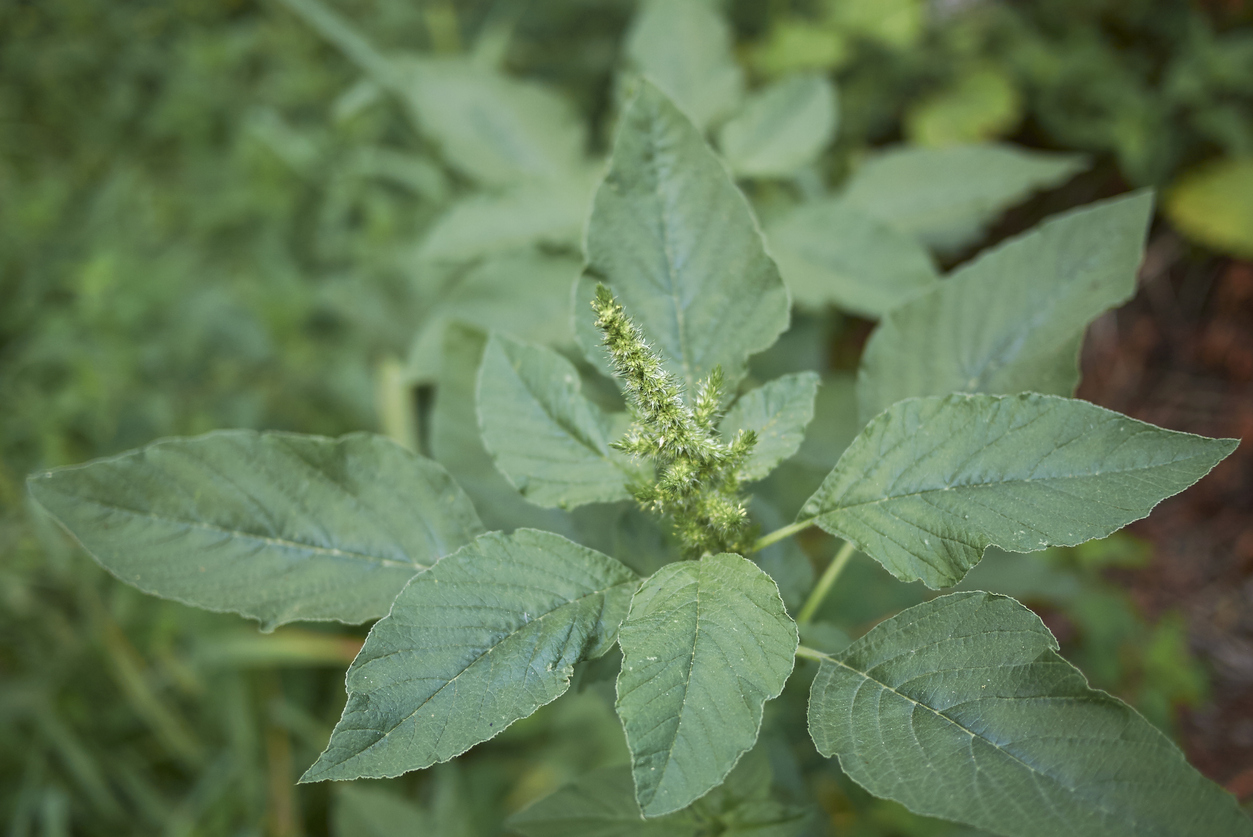
Amaranth Genomes Reveal Secrets of Herbicide Resistance
March 5, 2025| |
A new study conducted by the University of Illinois Urbana-Champaign and collaborating institutions reveals the complete chromosome-level genomes for Palmer and two other Amaranthus species, smooth and redroot pigweed. The results of this study are a major leap in scientists' understanding of the weeds' biology, including their ability to detoxify common herbicides.
The study focused on Palmer amaranth, the most troublesome of the three species. The research team characterized Palmer's glyphosate resistance gene, which occurs in a large circular segment of DNA that exists outside of any chromosome. The researchers also honed in on sex determination genes in Palmer, to develop modified male plants containing a gene drive. They identified two genes that appear to control maleness on chromosome 3 in Palmer.
Aside from studying the genomes of Amaranthus species, the study also looked into important gene families, such as cytochrome P450s. These weeds have hundreds of similar P450 genes and it has been difficult to identify the ones responsible for non-target-site resistance by detoxifying herbicides before they can cause damage. Co-author Pat Tranel, professor in the Department of Crop Sciences, said the new catalog of P450 genes will help them systematically figure out which ones confer resistance to which herbicides. “That way we can determine which herbicides are detoxified by the same non-target-site resistance mechanism and avoid tank-mixing those products,” he added.
For more details, read the article in ACES News.
| |
You might also like:
- Genomes of Three Most Troublesome Agricultural Weeds Published
- Oligonucleotide-based Method Offers Precise Control Over Weeds
- Pocket K No. 10: Herbicide Tolerance Technology: Glyphosate and Glufosinate
Biotech Updates is a weekly newsletter of ISAAA, a not-for-profit organization. It is distributed for free to over 22,000 subscribers worldwide to inform them about the key developments in biosciences, especially in biotechnology. Your support will help us in our mission to feed the world with knowledge. You can help by donating as little as $10.
-
See more articles:
-
Plant
- Research Pinpoints Key Gene in Enhancing Drought Tolerance in Rice
- Study Reveals Hybrid Stacking in Maize Do Not Contribute Unintended Effects
- Ethiopia Approves GM Maize and Cotton for Commercial Production
- GM Crops to Help Combat Food Insecurity
- Safety Assessment Shows GA21 x T25 Maize as Safe as Conventional Counterpart
-
Food
- FSANZ Calls for Comment on Food Made from Insect-Protected GM Soybean COR23134
- Indonesia Requires Labeling for Food Products with at Least 5% Genetically Engineered Ingredients
-
Environment
- Amaranth Genomes Reveal Secrets of Herbicide Resistance
-
Read the latest: - Biotech Updates (December 17, 2025)
- Gene Editing Supplement (December 17, 2025)
- Gene Drive Supplement (February 22, 2023)
-
Subscribe to BU: - Share
- Tweet

